・
スカイ姫のつぶやき街角北西部ルート8
榎本武揚像入口
 |


・
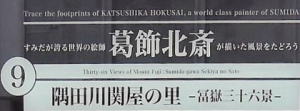
葛 飾 北 斎 ⑨
隅田川関屋の里 ━富嶽三十六景 ━
Thirty-six Views of Mount Fuji:
Sumida-gawa Sekiya no Sato
住 所 / 東京都墨田区堤通2-7番地
(墨堤通り沿い)
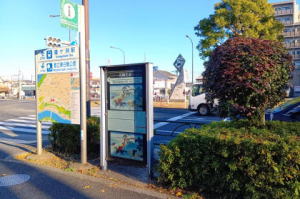
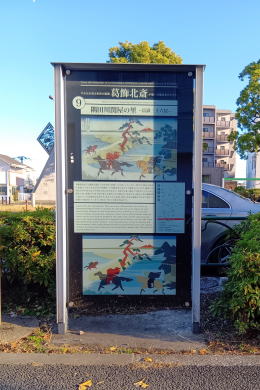
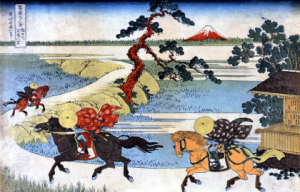 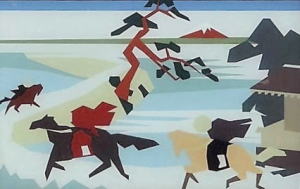 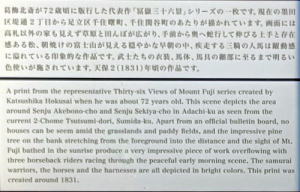 葛飾北斎が72歳頃に版行した代表作 「富嶽三十六景」シリーズの一枚で す。現在の墨田区堤通2丁目から足立 区千住曙町、千住関谷町のあたりが 描かれています。画面には高札以外 の家も見えず草原と田んぼが広がり 、手前から奥へ蛇行して伸びる土手 と存在感ある松、朝焼けの富士山が 見える穏やかな早朝の中、疾走する 三騎の人馬は躍動感に溢れている印 象的な作品です。武士たちの衣装、 馬体、馬具の細部に至るまで明るい 色使いが施されています。天保2(18 31)年頃の作品です。 A print from the representative Thirty- six Views of Mount Fuji series created y Katsushika Hokusai when he was about 72 years old. This scene depicts the area around Senju Akebono-cho and Senju Sekiya-cho in Adachi-ku as seen from the current 2-Chome Tsutsumi-dori, Sumida-ku. Apart from an official bulletin board, no houses can be seem amid the grasslands and paddy fields, and the impressve pine tree on the bank stretching from the foreground into the distance and the sight of Mt. Fuji bathed in the sunrise produce a very impressive piece of workoverflowing with three horseback riders racing through the peaceful early morning scene. The samurai warriors, the horses and the harnesses are all depicted in bright colors. This print wascreated around 1831 |
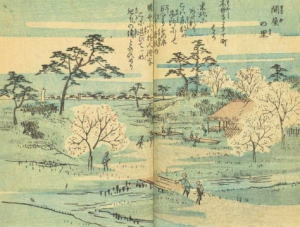
絵本江戸土産第8編 関 屋 の 里
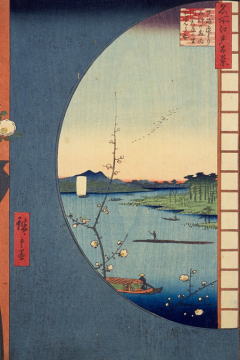
名所江戸百景 著者:広重
真崎辺より水神の森内川関屋の里
を見る図
出版者:魚栄 出版年月日 安政4
・
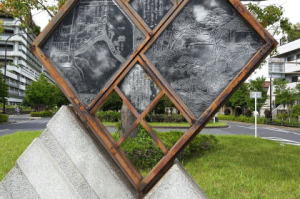
鐘 ヶ 淵 陸 橋
「鐘ヶ淵」の地名の由来となった伝説と、広重の浮世絵「名所江戸百景」を題材に
した2つのモニュメントです。
北側の碑は地名の由来となった「鐘ヶ淵」の沈鐘伝説が記されています。徳川吉宗
が沈んだ鐘を引き上げようとしたが、鐘
が再び沈んでしまうという伝説です。南
側の碑は歌川広重が描いた「木母寺内川
御前栽畑」のレリーフが施されています。
住所:東京都墨田区堤通2丁目 都道461号線
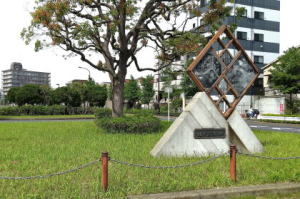
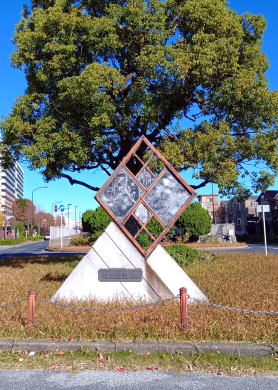
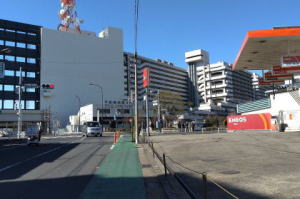
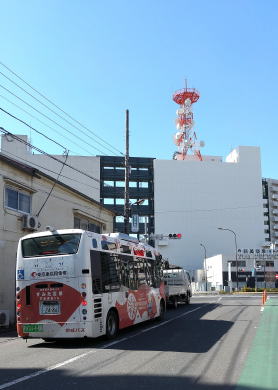
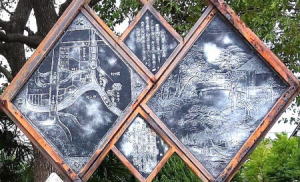
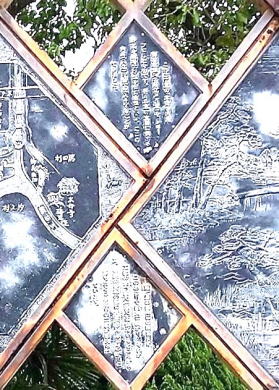
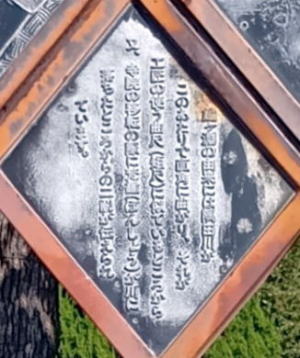
左側のレリーフは「鐘ヶ淵」の地名の
由来に関する図で、右側は歌川広重が
「江戸名所百景」で描いた「木母寺内
川御前畑」のレリーフです。上部のレ
リーフ文面これは広重の「木母寺内川
御前栽畑」(名所江戸百景)をレリ
ーフにしたものです。徳川将軍の食
膳に供する菜を栽培する畑を御前栽
畑といい、ここの内川(入江)を船で
出入りすることができました。下側
のレリーフ文面鐘ヶ淵の由来には隅
田川がこのあたりで直角に曲がり、
それが工匠の使う曲尺(短尺)ににて
いるところから、又、寺院の移転の
際に梵鐘が川に落ちたところからの
二説が伝えられています。
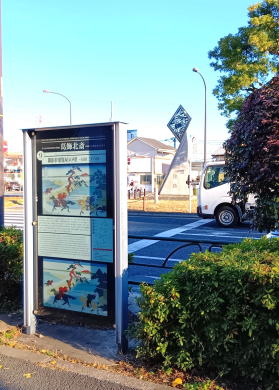
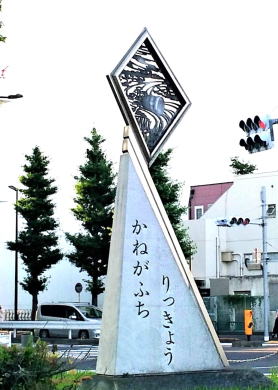
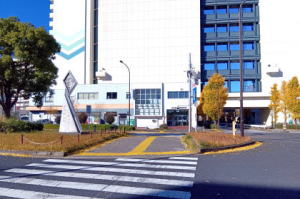
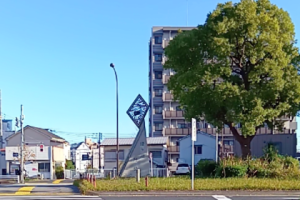
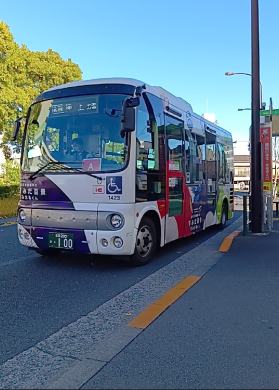
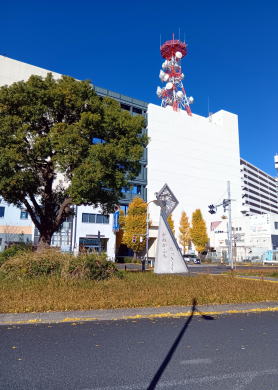
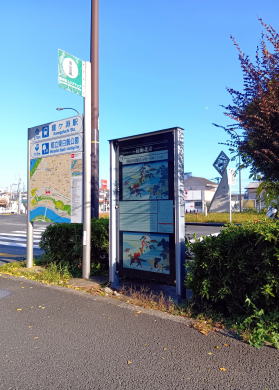
・
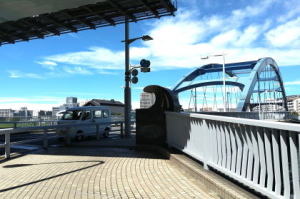
水 神 大 橋
東京都の防災拠点である汐入公園と東
白鬚公園とをつなぐ連絡橋として建設
された橋で、当初は歩行者専用橋でし
たが、平成8年(1996年)自動車道路共
用となりました。橋の名称は、東岸東
白鬚公園の近くにある隅田川神社(水神
宮)にちなんでいます。西岸は荒川区南
千住八丁目、東岸は墨田区堤通二丁目。
東京都道461号線が通る
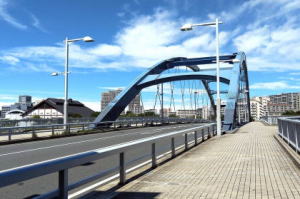
防災団地のビルの下の先に水神大橋が
あります
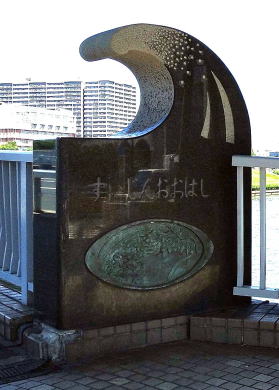
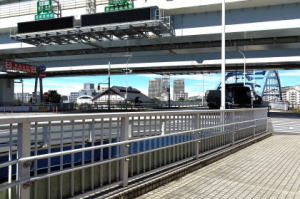
梅若橋をくぐります
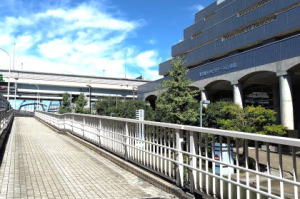
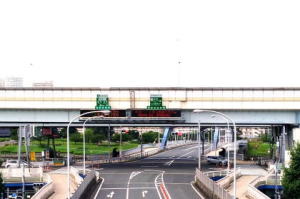
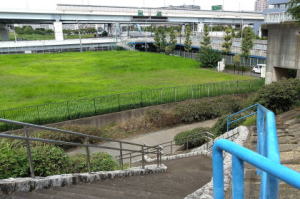
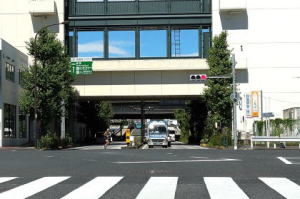
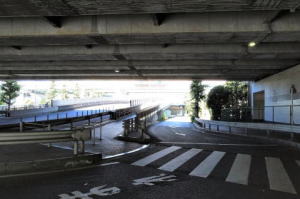
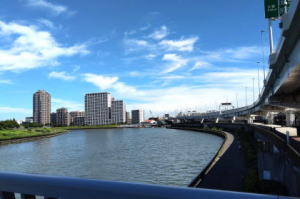
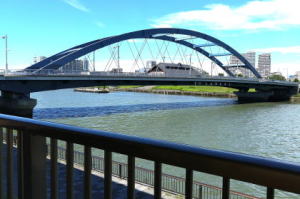
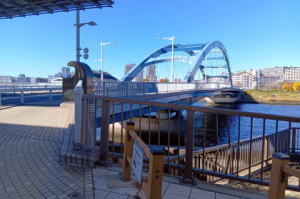
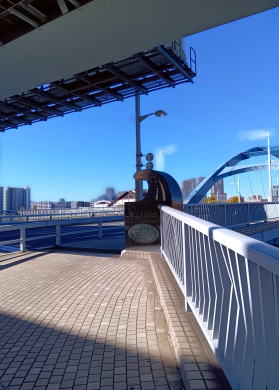
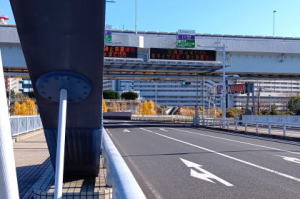
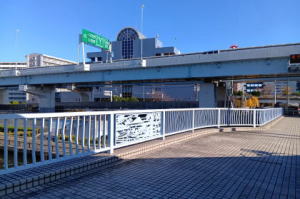
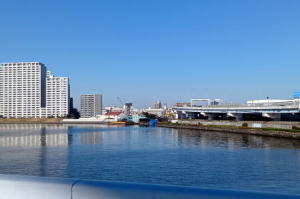
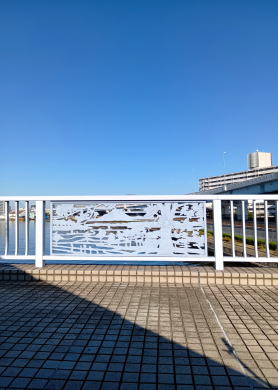
・
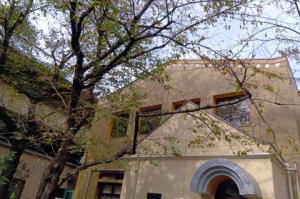
梅若橋コミュニティ会館
墨田区が設置する区民向けの複合施設で
、図書室・児童室・地域集会所などを備
えています。地域の教養・文化の向上、
子どもから高齢者までの地域住民の交流
・育成支援、サークル活動・町会活動の
場の提供をしています。都バスの停留所
(梅若橋コミュニティ会館)が目の前に
あります。
所在地: 東京都墨田区堤通2丁目9−1
電 話: 03-3616-1101
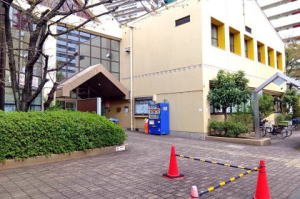
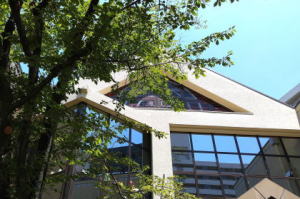
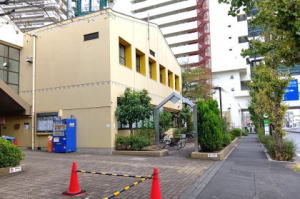
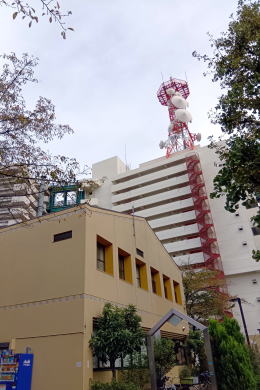
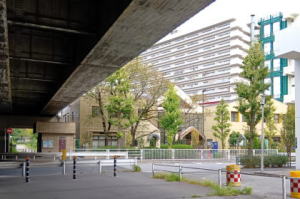
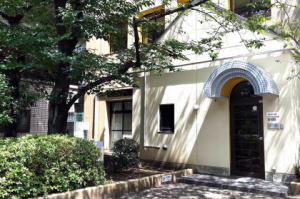
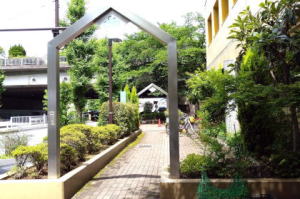
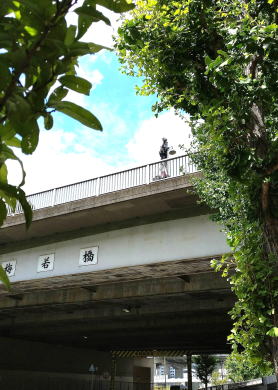
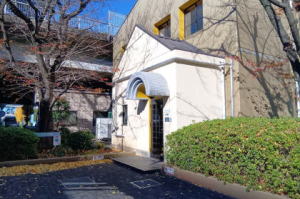
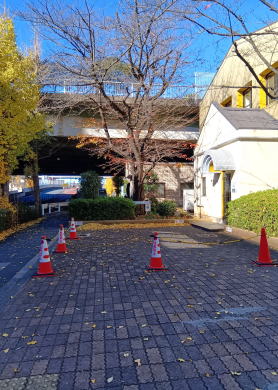
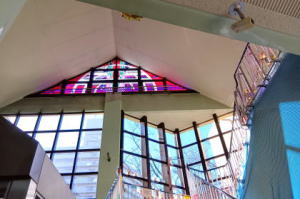
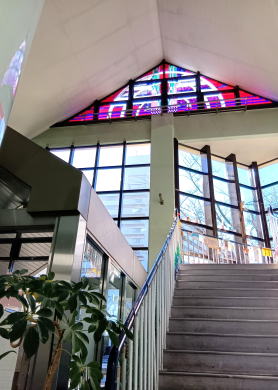
・
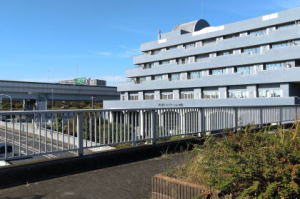
東京都リハビリテーション病院
都内におけるリハビリテーション医療の
中核を担う病院であり、ただの整形外科
や一般病院とは異なり、専門的リハビリ
医療と福祉・介護との連携を重視。
長年の運営実績と、多職種スタッフによ
るリハビリ体制で、患者さんの機能回復
・生活の質の向上を目指しています。
住 所:東京都墨田区堤通2-14-1
電 話:03-3616-8600(代表)
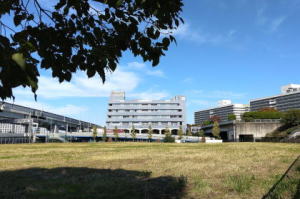
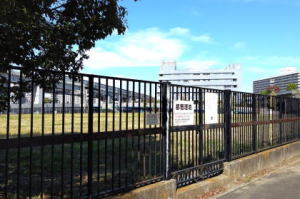
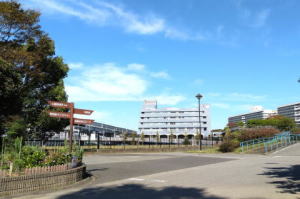
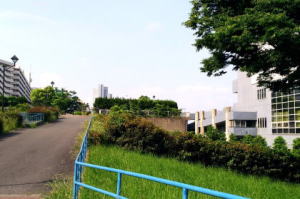
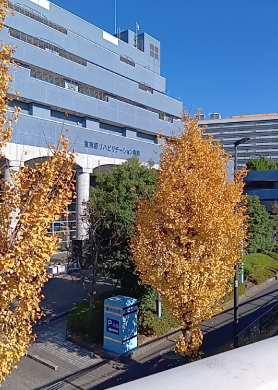
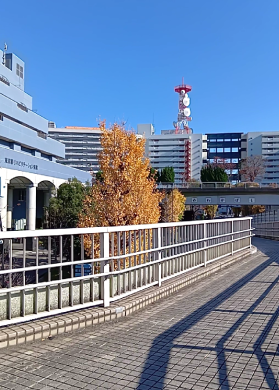
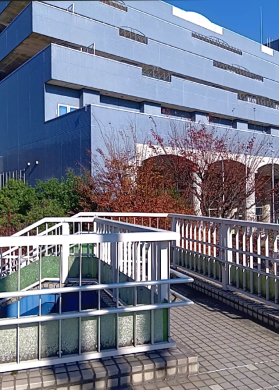
・
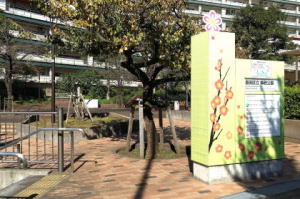
墨田区立梅若公園 (歴史文化公園)
歴史にゆかりのある公園であり、榎本
武揚像や梅若塚跡があることから、
平成28年度に歴史文化公園整備事業
により整備されました。
文化財:墨田区登録有形文化財「銅像
榎本武揚像」、
東京都指定旧跡「梅若塚」
住 所 / 東京都墨田区堤通2丁目-6-10号
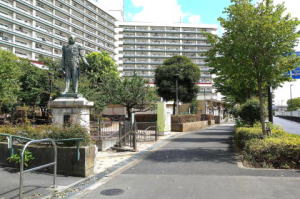
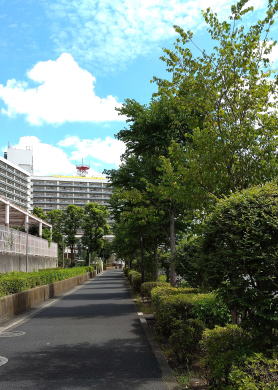
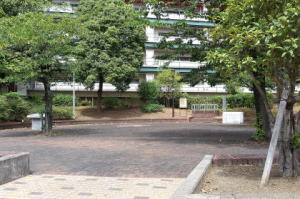
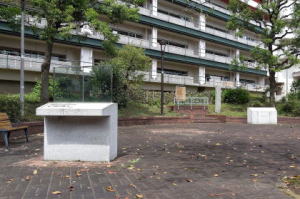
・
梅 若 塚 跡 (東京都指定旧跡)
現在の塚は木母寺境内にあります
梅若塚の梅若丸は伝説上の人物で
謡曲「隅田川」で知られます。
住 所 / 堤通2-6-10号 (区立梅若公園内)
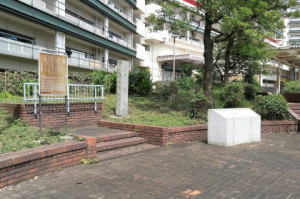 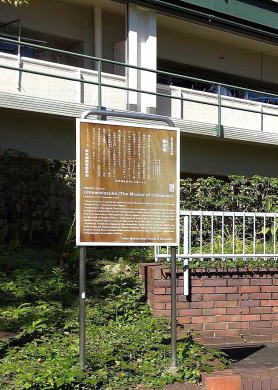 東 京 都 指 定 旧 跡 梅 若 塚 所在地 墨田区堤通二の六 区立梅若公園 標 識 大正九年三月 指 定 昭和三〇年三月二八日 梅若塚の梅若丸は伝説上の人物で、謡 曲「隅田川」で知られます。梅若丸は 京都北白川の吉田少将惟房の遺児で、 比叡山で修行中に信夫藤太という人買 いによりさらわれ、奥州に向かう途中 隅田川のほとりで死にます。その死を 哀れんだ天台宗の高僧忠円が築いた墓 が梅若塚であると伝えられます。木母 寺は忠円により梅若塚の傍らに建てら れた墨田院梅若寺が始まりとされま す。塚は梅若山王権現として信仰を 集めました。木母寺は当該地周辺に ありましたが、白髭防災団地建設に 伴い現在地に移転しています 平成二十四年三月 建設 東京都教育委員会 Historic Places Umewakazuka (The Mound of Umwaka) Landmarked in 1920, Designated in 1955 Umewakazuka is said to be a grave of Umewakamaru,who is known for a Noh song“Sumida River”concerns to his legend.According tothislegend,Umewakamaru was an orphan of yoshida Shosho KorefusaStudying in Mount Hiei、 he was kidnapped by a slave-dealer Shinobuno Tota.On theway Tota took him to Oshu (present Tohoku region ), Umewakamaru got sick and diedOn the bank of Sumida River.A high monk of Tendai Sect, Chuen, felt a pity for his Death and buried him in a mound. This is said to be the mound of Umewaka. Mokuboji Temple is originated from Sumidain Umewakadera Temple which wasbuilt beside the mound made by Chuen. Mokuboji Temple and the mound had beenlocated around here, but were both moved to the current place due to the constructionof the disaster prevention facilities. Tokyo Metropolitan Board of Education |
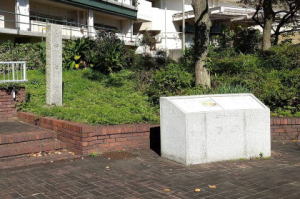 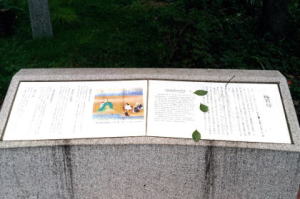 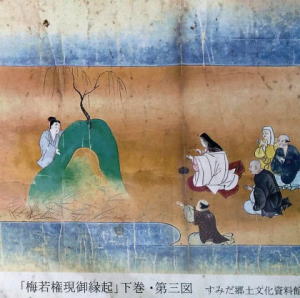 梅 若 塚 梅若塚は謡曲「隅田川」で知られる 「梅若伝説」に登場する伝説上の人物 である梅若丸の墓であると伝えられま す。梅若丸は京都北白川の「吉田少将 これふさ」と美濃国野上の長者の、一 人娘「花御せん」の子で、父の死後7 歳で比叡山に入り修行に励みます。 梅若丸の秀でた才能は評判になりま すが、松若丸という同じく優秀な同 輩との争いが原因で、みちのくの人 商人「人買い」信夫の藤太にかどわ かされてしまいます。奥州に連れて 行かれる途中、なれない長旅の疲労 により重い病にかかり、藤太は梅若 丸を隅田川のほとりに置き去りにし てしまいます。里人たちの看病もむ なしく 「たづね来て とはゝこたへよ みやこ鳥 すみたかはらの 露ときえぬと」という辞世の 句を残し、貞元元年三月十五日、 梅若丸はわずか12歳でその生涯を閉 じます。その死を哀れんだ出羽国羽 黒山の高僧で下総の御坊忠円阿闍梨 が墓を築き、一本の柳を植えて菩提 を弔ったのが梅若塚であると伝えら れ、梅若丸は山王権現として信仰の 対象となっています。 Umewakazuka (The Mound of umewaka) Umewakazuka is said to be the grave of Umewakamaru, a legendary figure known from the Noh song “Sumidagawa” (Sumida River).Acording to legend, Umewakamaru was the child of Yoshida Shosho Korefusa of Kitashirakawa in Kyoto. While training at Mount Hiei, he was kidnapped by a slaver named, Shinobuno Tota,who tried to take him to Oshu (in modern Iwate Prefecture in northern Japan).Along the way, Umewakamaru became very ill and died on the banks of the Sumida River.Saddened by this death, high monk Chune of the Tendai school of Buddhism built this grave, Umewakazuka. 梅若塚と木母寺」 木母寺は梅若塚の傍らに建てられた草 庵が梅若寺と呼ばれるようになったの が始まりとされます。その後「梅」の 字を分けて「木母」となったと言われ ます。木母寺は当該地周辺にありまし たが、白鬚東地区防災拠点建設に伴 い、現存する梅若堂、梅若塚と共に 現在の場所に移転しています。 「梅若塚と妙亀塚」 妙亀塚(都指定旧跡)は、梅若丸の母親 の墓であると言われます。我が子を し求めこの地まで来た母親が里人か ら梅若丸の死を知らされ、梅若丸の 菩提を弔うために庵を結びました。 その後、母は底なし池に身を投げて しまいます。母が身を投げた池は 隅田川の対岸、浅茅が原(現在の 東区橋場付近)にあった池と言わ れ、妙亀塚は妙亀塚公園(台東区 橋場)内にあります。 「梅若権現御縁起」 「梅若伝説」を伝える絵巻物として、 「紙本着色梅若権現御縁起」附漆箱 二匣(墨田区指定有形文化財)があり ます。これは高崎城主安藤対馬守 重治が、延宝7年(1679)3月に寄進 したもので、現在も木母寺が所蔵 する寺社縁起巻物です。原本は保 存のため非公開ですが、すみだ郷 土文化資料館で複製を所蔵してお り、展示されています。 「隅田川物」 謡曲「隅田川」は世阿弥の子、観世元 雅によって作曲されました。「隅田川 物」とは、この梅若伝説を扱った謡曲 「隅田川」を原点とした江戸文芸のジ ャンルの一つで、歌舞伎や浄瑠璃など でさまざまな作品が生まれました。 |
明治期の木母寺境内
「木母寺境内之図」は、梅若堂が当該地
に建立された明治期の木母寺の様子を
伝える貴重な資料です。
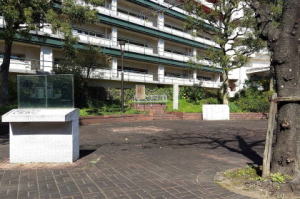 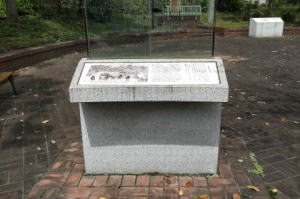 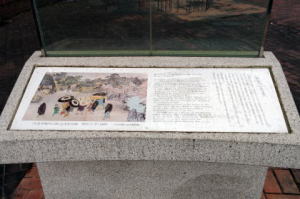 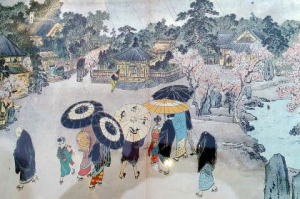 明治期の木母寺境内 江戸時代の木母寺は幕府から寺領を 与えられ、多くの参拝者を集めてい ましたが、明治時代になり神仏分離 令に伴う廃仏毀釈のあおりをうけ 木母寺は廃寺し梅若神社となりま した。幕府の庇護を失った梅若神 社の経営は苦しく、存続の危機に 陥りますが、様々な人々の支援を け、明治22年(1889)に寺院への復 を果たしました。現在の木母寺に 移築され現存する梅若堂は、木母 寺が再興されたのちに建立された もので、戦時中の空襲から奇跡的 に焼失を免れたものです。 「木母寺境内之図」は、その梅若堂 が当該地に建立された明治期の木母 寺の様子を伝える貴重な資料です。 画面の中央に梅若堂、右手に木母寺 の本堂、左手に料理茶屋がそれぞれ 描かれており、梅若堂を中心とした 木母寺境内が描かれた一枚です Mokuboj Temple Grounds in the Meiji Period The Umewaka-do is a shrine to Umewakamaru that is today located at Mokuboji, a Buddhist temple, Mokuboji was originally shut down in the Meiji period due to the anti-Buddhist movement associated with the Meiji government’s official separation of Buddhism and Shintoism In 1889, Mokuboji Templewas restored and the Umewaka-do was built within it. Miraculously, these buildings avoided destruction by air raids in the Second world war. The painting “Mokuboji Temple Grounds” is a precious work of art that depicts Mokuboji Temple in the meiji Period when the Umewaka-do was constructed there. Umewaka-do is placed in the center of the picuture, with the main Mokuboji temple building to the right and a traditional Japanese restaurant (ryotei) to the left. Although this is a picuture of the Mokuboji temple grounds, what is located in the cnter is not the main temple building but Umewaka-do. From this, it is well understood that. Umewaka-do truly makes Mokuboji what it is. |
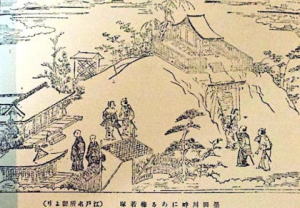
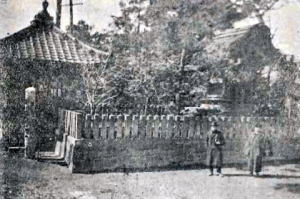
・
榎 本 武 揚
榎本武揚は江戸下谷御徒町の直参旗本の
家に生まれる。北海道の函館五稜郭で新
選組の土方歳三と共に官軍と戦った事で
有名。明治30年、農商務大臣を務めてい
た時、足尾銅山鉱毒事件をめぐる責任を
取って辞任。明治38年から73歳で亡くな
までの3年間を向島の別荘で暮らしまし
た。隅田川沿いを馬で散歩する姿がた
びたび見られたそうです。
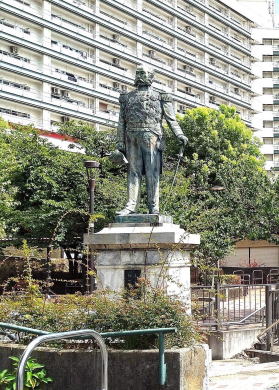
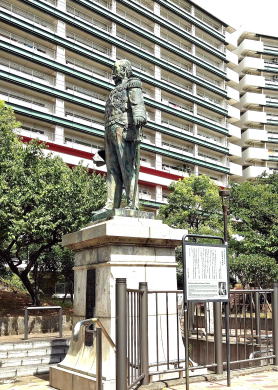
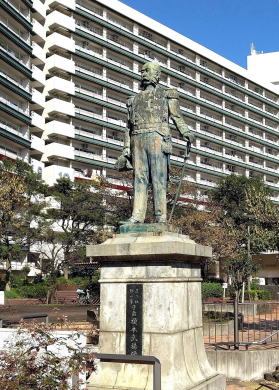
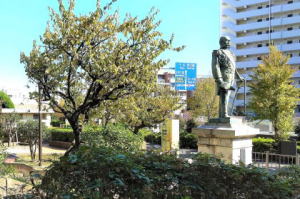
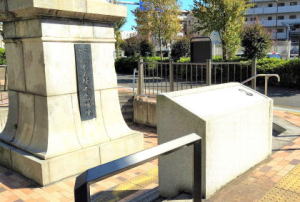
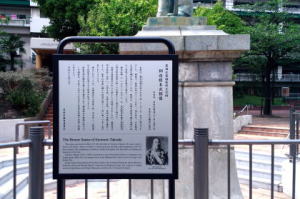 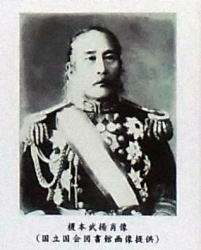 墨田区登録有形文化財 銅 造 榎 本 武 揚 像 所在地 墨田区堤通2丁目6番10号 墨田区立梅若公園内 本像は、榎本武揚没後の大正2年(1913) 5月に建立されました。銅製で、像高は 約3メートルあり、南を向き、大礼服姿 で荘重な趣を呈しています。彫刻は、 衣服の質感や顔の表情が細かく表現さ れ外形描写に優れています。榎本武揚 (1836~1908)は、戊辰戦争終盤の箱館 戦争で明治新政府軍と戦った旧幕臣と して著名な人物です。武揚は箱館戦争 の中心人物として投獄されましたが、 維新後は明治政府に出仕し、文部大 臣、外務大臣等、政府の要職を歴任 しました。晩年は向島に構えた別荘で 過ごし、馬に乗って歩く姿が見られた ようです。建立にあたっては、大隈重 信や大倉喜八郎、渋沢栄一、益田孝な ど政財界を代表する人物等が協力しま した。原型作者は藤田文蔵と田中親光 であり、鋳造者は平塚駒次郎です。 この銅像は、平成12年12月7日に墨田 区登録文化財に登録されました。 平成29年3月 墨田区教育委員会 The Bronze Statue of Enomoto Takeaki This statue was erected in May 1913 after the death of Enomoto Takeaki. The statue,made of bronze with about 3 meters in height, is facing south and showing solemn appearance with full- dress uniform. The sculpturing is excellent in outline description with fine texture of clothing and expression of his face. Enomoto Tateaki (1836- 1908) is prominent as one of the former retainers of shogunate, who fought against Meiji New Government Army at the Hakodate War, which was the last stage of the Boshin War. people representing political and business worlds, such as Okuma Shigenobu, Okura Kihachiro,Shibusawa Eiichi and Masuda Takashi, cooperated in building the statue. The sculptors of original mold are Fujita Bunzo and Tanaka Chikamitsu, and the caster is Hiratsuka Komajiro |
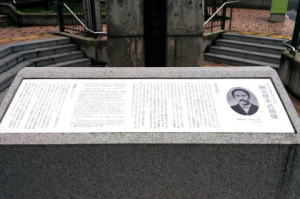 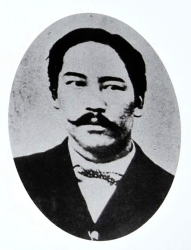 墨田区登録有形文化財 銅 像 榎 本 武 揚 像 「榎 本 武 揚」 榎本武揚は天保7年(1836)に幕臣の子と して江戸に生まれ育ち、昌平坂学問所 昌平黌) で学び、安政3年(1856)幕府が長崎に設 けた海軍伝習所に入りました。その 後、オランダに留学し、最新の知識や 技術を身につけ、慶応2年(1866)幕府 注文の軍艦開陽丸を回送し帰国しま した。武揚帰国後の日本は「大政奉還 」「王政復古 」という体制変換を迎え、武揚は戊 辰戦争の最後の戦いとなった 箱館戦争では、五稜郭を中心に明治政府に抵抗しま したが、明治2年(1869)降伏しました。 その後、武揚は投獄されましたが傑出 した人材として赦免され、明治政府に 出仕しました。明治8年(1875)には、海 軍中将兼特命全権公使として、樺太・千島交換条約の締結に尽力し ました。明治18年(1885)伊藤博文が初 代内閣総理大臣に任命されると、旧 幕臣でありながら逓信大臣に就任以降 、文部、外務、農省務大臣などの要職 を歴任しました。また、東京農業大学 の前身である私立育英黌農業科を創設 したほか、化学、電気、気象などの各 学会に関わりを持ち、日本の殖産産業 を支える役割を積極的に引き受けまた 。晩年は成島柳北邸(現言問小学校)の 西側に屋敷を構え、悠々自適の日々を 過ごしました。明治41年(1908)10月に 73歳でなくなりましたが、墨堤を馬で 散歩する姿や、向島百花園で草花を愛 でる姿が見られたそうです。 Sumida ward Registered Tangible Cultural Property. Statue of Enomoto Takeaki ,Enomoto Takeaki was born in 1836 to a retainer of the shougun. In the Boshin Civil War (1868~1869), Enomoto led the forces of the former shogunate and occupied the Goryokaku star fortress in Hakodate, Hokkaido. Al though imprisoned after losing the Battle of Hakodate,his talents were recognized by the new Meiji government, who pardoned him and appointed him to a government post. In addition to negotiating the Treaty of Saint Petersburg (1875) as a special envoy to Russia, Enomoto went on to serve as Minister of Communications, Minister of Education, Foreign Minister And Minister of Agriculture and Commerce at various times throughout his career. He was also given the rank of viscount. He died on October 26, 1908, at the age of 73. According to historical accounts, he was often seen riding his horse along the banks of the Sumida River and admiring the flowers of Mukojima- Hyakkaen garden 「銅像について」 本像は青銅製で、高さ約400㎝の 台座上に像高300㎝の榎本武揚の立 像が乗っています。建立は大正2年(1913)5月で、当時の木母寺の境内 ある当該地に建てられました。 白鬚東地区防災拠点建設に伴い 木母寺は移転しましたが、本像は 当該地に残されました。本像の原 型作者は田中親光、藤田文蔵、鋳 造者は平塚駒次郎であることが台 座背面に記されています。また、 建設者に大隈重信、大倉喜八郎、 渋沢栄一など当時の政財界の代表 的人物が名を連ねています。原型 作者のひとりである藤田文蔵は洋 彫刻界における先覚者として位置 づけられ、代表作に陸奥宗光像(外務省)や井 伊直弼銅像(掃部山公 園、太平洋戦争で供出)狩野芳崖胸像(東京国立博物館)な どが知られています。 |

・
(お店・工場関係)

・
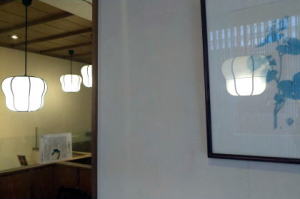
手打ちそば・生 粉 亭
脱サラで始めたお店だそうです。麺は繊
細だから麺にストレスを与えない打ち方
をしていて三色そばの食べ比べができま
す。北海道産そばを石臼で挽いた十割の
生粉打、茨城の生産農家より直接仕入れ
たそばを打つ太目の田舎、二八そばが
セットになった三色そば等を味わうこと
ができます。
生粉きことは。小麦粉などの混ざりもの
のない、純粋なそば粉。
住 所 / 東京都墨田区墨田5丁目5−3
電 話: 03-3610-1935
営業時間 / 11:30~15:00、17:00~20:00
定休日 / 水曜、第3火曜
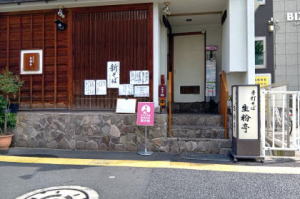
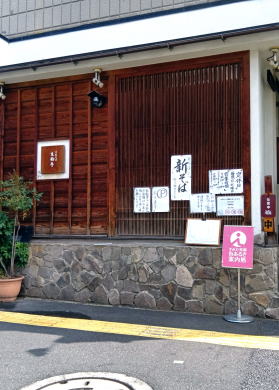
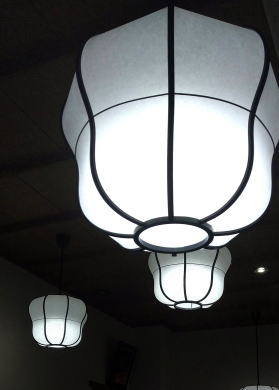
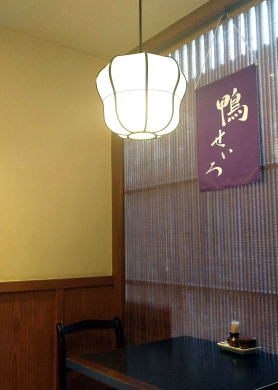
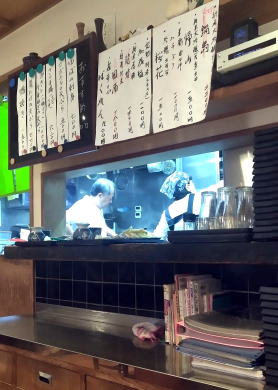


墨田区内循環バス時刻表
(すみだ百景 すみまるくん、すみりんちゃん)
Copyright (C) 2011 K. Asasak All Rights Reserved